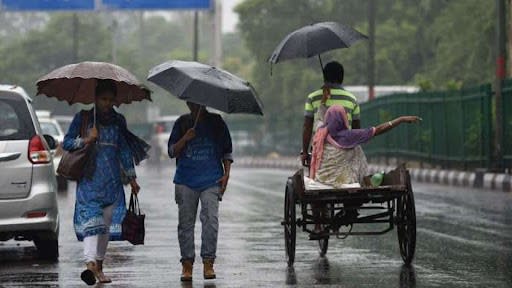Rainfall is expected to persist across various regions of Kenya until June 2, with significant variations in distribution and intensity. According to a seven-day forecast covering the period from May 27 to June 2, different parts of the country will experience varied rainfall patterns, with some regions receiving substantial downpours while others remain largely dry.
The forecast highlights that the rainfall will affect areas within the Central Highlands, Lake Victoria Basin, Rift Valley, the Coast, and parts of Western Kenya. Along the coastal strip, particularly in Lamu and Garsen, rainfall intensity will range between 10 to 20mm. Kilifi, especially areas near the Indian Ocean, is also expected to receive light showers, with rainfall amounts between 1 to 10mm. Similar conditions will be experienced in areas around Tsavo, Bura, and Kwale.
In the Rift Valley, rainfall will mostly be concentrated in Trans Nzoia, Bungoma, Uasin Gishu, Bomet, Kericho, and Nakuru counties. These areas are projected to receive rainfall ranging between 10 to 20mm. However, parts of the western region and the Lake Victoria Basin are expected to receive heavier rainfall. Counties including Busia, Migori, Nyamira, Kisii, Homa Bay, Siaya, Kisumu, and Vihiga will likely experience between 20 to 50mm of rainfall during this period.
The Central Highlands will also see significant rainfall, with counties such as Kiambu, Murang’a, Nyeri, Nyandarua, Tharaka Nithi, Meru, and Laikipia all expected to receive steady rains. In particular, pockets within Tharaka Nithi, Nyandarua, and Murang’a could receive rainfall amounts reaching up to 120mm.
Further west, intense rainfall of up to 120mm is expected within parts of Kakamega, Busia, and the border region between Nandi and Kericho counties. In contrast, some areas such as Narok, Baringo, and Elgeyo Marakwet are forecasted to remain dry throughout the forecast period.
In Northeastern Kenya, Mandera county is expected to receive up to 10mm of rainfall. The same amount of rain is forecasted for Kajiado and Nairobi counties, suggesting relatively lighter showers in these areas compared to the more rain-soaked western and central parts of the country.
Temperature fluctuations are also expected during this period. Daytime temperatures exceeding 30°C are likely over most of the Coastal region, as well as Northeastern and Northwestern Kenya. Meanwhile, night-time temperatures may drop significantly in parts of the Central Highlands, Central Rift Valley, and the area surrounding Mt. Kilimanjaro, with some regions potentially experiencing temperatures below 10°C.
Additionally, strong winds from the south to southeast are expected across various regions. Wind speeds are forecasted to be below 25 knots (approximately 12.86 m/s), particularly affecting the Coast including Kenya’s territorial waters as well as the Southeastern lowlands, Northeastern, and Northwestern Kenya.
This weather pattern signals a continued wet spell for many parts of the country and could have implications for agriculture, infrastructure, and daily activities. Residents in high rainfall zones are advised to prepare for possible disruptions, while those in drier regions should continue to monitor forecasts for any changes.

